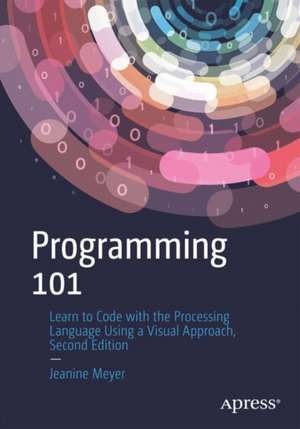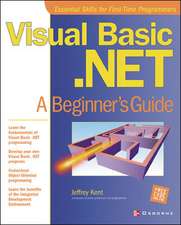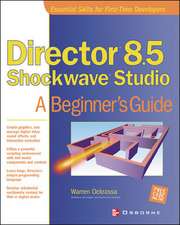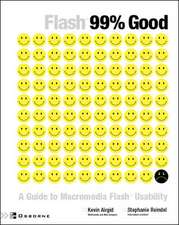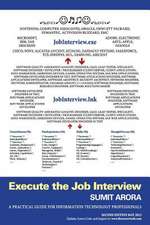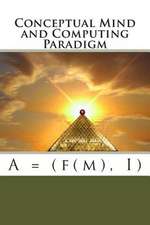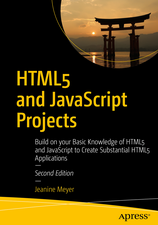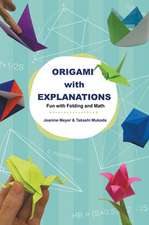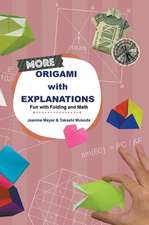Programming 101: Learn to Code with the Processing Language Using a Visual Approach
Autor Jeanine Meyeren Limba Engleză Paperback – 24 sep 2022
The chapters in the book will demonstrate the process of programming, starting with formulating an idea, planning, building on past projects, and refining the work, similar to writing an essay or composing a song. This approach will guide you to make use of logic and mathematics to produce beautiful effects. The text contains an Appendix with an introduction to p5.js, a way to produce JavaScript programs with Processing functionality for drawing, images, and interactions to publish on the Web.
The term for program in Processing is sketch. The Processing language has been constructed by visual artists using the Java programming language as a base. However, the sketches featured in this book and typical in Processing are far more than static drawings; they incorporate interaction, animation, video, audio, and accessing files on the local computer and on the Web. Technical features are introduced and explained in the context of complete examples: games (Snake, Hangman, jigsaw, slingshot), making a collage of family images and video clips, preparing directions for folding an origami model, rotating objects in 3D, and others.
Programming is a fun, creative, expressive pursuit. It does require attention to details and can be frustrating. Still, there is very little that comparesto the satisfaction of building a program out of nothing and making it work (or taking an existing program and fixing a problem, or adding a feature and making it better). Programming 101 is your gateway to making this happen.
What You'll Learn
- Gain basic programming skills
- Build fun and creative programs
- Use files for making a holiday card or a sequence of instructions
- Combine videos, images, and graphics in a Processing sketch
- Connections to other programming languages, most especially Java and JavaScript
Anyone who has been thinking about trying programming, or has tried, but needs assistance. Anyone who wants to use their own creativity and artistic talents. Anyone who wants to know what is involved in the technology that is present in our lives. Anyone who wants to know what is involved in the technology that is present in our lives.
Preț: 291.31 lei
Preț vechi: 364.14 lei
-20% Nou
Puncte Express: 437
Preț estimativ în valută:
55.75€ • 60.54$ • 46.83£
55.75€ • 60.54$ • 46.83£
Carte disponibilă
Livrare economică 01-15 aprilie
Livrare express 15-21 martie pentru 123.01 lei
Preluare comenzi: 021 569.72.76
Specificații
ISBN-13: 9781484281932
ISBN-10: 1484281934
Pagini: 348
Ilustrații: XXIII, 348 p. 93 illus., 76 illus. in color.
Dimensiuni: 178 x 254 x 31 mm
Greutate: 0.71 kg
Ediția:2nd ed.
Editura: Apress
Colecția Apress
Locul publicării:Berkeley, CA, United States
ISBN-10: 1484281934
Pagini: 348
Ilustrații: XXIII, 348 p. 93 illus., 76 illus. in color.
Dimensiuni: 178 x 254 x 31 mm
Greutate: 0.71 kg
Ediția:2nd ed.
Editura: Apress
Colecția Apress
Locul publicării:Berkeley, CA, United States
Cuprins
1. Basics.- 2. Interactions.- 3. Animation Using Arrays and Parallel Structures.- 4. Classes.- 5. More Interactions.- 6. Images and Graphics.- 7. Using Files for Making a Holiday Card.- 8. Combining Videos, Images, and Graphics- 9. Word Guessing Game.- 10. 3D.- Appendix A: Introduction to p5.js.
Notă biografică
Jeanine Meyer is Professor Emerita at Purchase College/SUNY. Before Purchase, she taught at Pace University and worked at IBM Research and other parts of IBM and at other companies. She is the author of 5 books and co-author of 5 more on topics ranging from educational uses of multimedia, programming (two published by Apress, which have been updated for 2nd Editions), databases, number theory and origami. She earned a PhD in computer science at the Courant Institute at New York University, an MA in mathematics at Columbia, and a SB (the college used the Latin form) in mathematics from the University of Chicago. Recently, she has given lectures, in-person and remotely, connecting origami, mathematics, and computer science. She is a member of Phi Beta Kappa, Sigma Xi, Association of Women in Science, Association of Computing Machinery, and a featured reviewer for ACM Computing Reviews. Jeanine is trying but remains a beginner at Spanish and piano.
Textul de pe ultima copertă
Programming permeates almost all aspects of our lives. This includes being active on social media, shopping online, and participating in virtual courses. It also includes driving a car and using many devices. This book will teach you the basics of programming using the Processing programming language and provide practice with logical, algorithmic thinking. It can provide insight into what is involved in producing the technical infrastructure of our world. While reading this book, you can build programs based on your own ideas, using images you create or acquire and making connections to activities you enjoy.
The chapters in the book will demonstrate the process of programming, starting with formulating an idea, planning, building on past projects, and refining the work, similar to writing an essay or composing a song. This approach will guide you to make use of logic and mathematics to produce beautiful effects. The text contains an Appendix with an introduction to p5.js, a way to produce JavaScript programs with Processing functionality for drawing, images, and interactions to publish on the Web.
The term for program in Processing is sketch. The Processing language has been constructed by visual artists using the Java programming language as a base. However, the sketches featured in this book and typical in Processing are far more than static drawings; they incorporate interaction, animation, video, audio, and accessing files on the local computer and on the Web. Technical features are introduced and explained in the context of complete examples: games (Snake, Hangman, jigsaw, slingshot), making a collage of family images and video clips, preparing directions for folding an origami model, rotating objects in 3D, and others.
Programming is a fun, creative, expressive pursuit. It does require attention to details and can be frustrating. Still, there is very little that compares to the satisfaction of building a program out of nothing and making it work (or taking an existing program and fixing a problem, or adding a feature and making it better). Programming 101 is your gateway to making this happen.
The chapters in the book will demonstrate the process of programming, starting with formulating an idea, planning, building on past projects, and refining the work, similar to writing an essay or composing a song. This approach will guide you to make use of logic and mathematics to produce beautiful effects. The text contains an Appendix with an introduction to p5.js, a way to produce JavaScript programs with Processing functionality for drawing, images, and interactions to publish on the Web.
The term for program in Processing is sketch. The Processing language has been constructed by visual artists using the Java programming language as a base. However, the sketches featured in this book and typical in Processing are far more than static drawings; they incorporate interaction, animation, video, audio, and accessing files on the local computer and on the Web. Technical features are introduced and explained in the context of complete examples: games (Snake, Hangman, jigsaw, slingshot), making a collage of family images and video clips, preparing directions for folding an origami model, rotating objects in 3D, and others.
Programming is a fun, creative, expressive pursuit. It does require attention to details and can be frustrating. Still, there is very little that compares to the satisfaction of building a program out of nothing and making it work (or taking an existing program and fixing a problem, or adding a feature and making it better). Programming 101 is your gateway to making this happen.
Caracteristici
Programming book for beginners that explains the why of programming as well as the how Simple, appealing examples that cross over to the real world, inspiring readers to build their own programs Written by successful author and college professor, Jeanine Meyer, who has taught these concepts to many students
